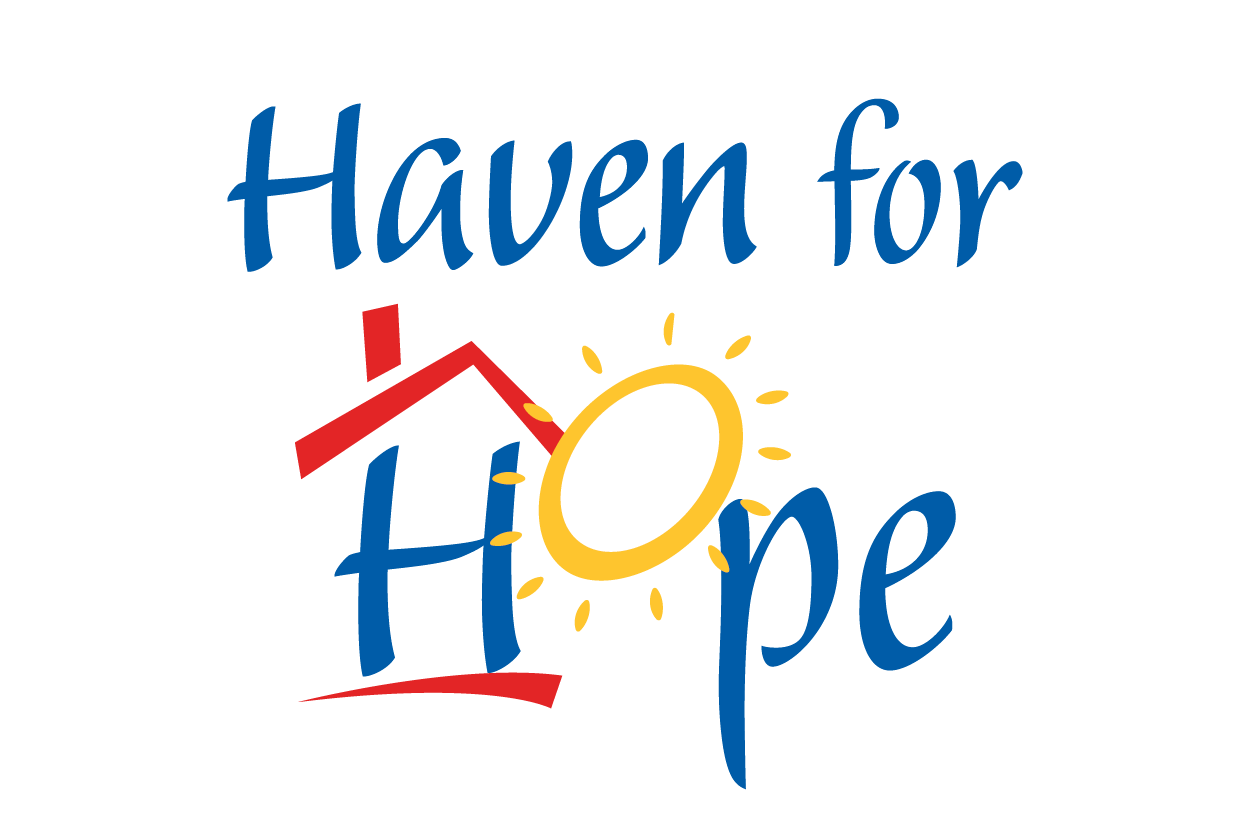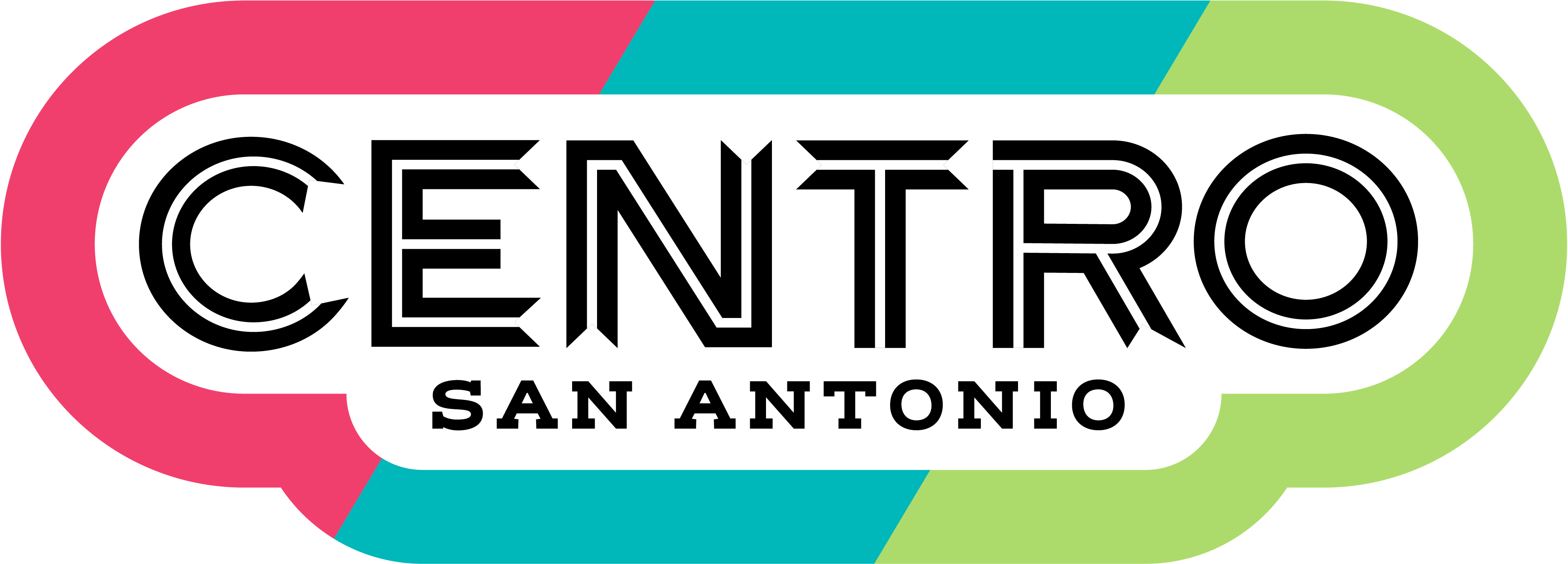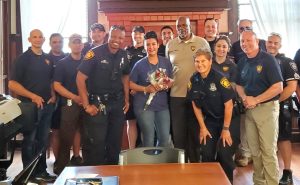 CAM’s new pilot program called “One Life at a Time” is a special program where we partner with our downtown Bike Patrol officers. This is a partnership that allows the police to have an option other than jail or arrest when dealing with individuals experiencing homelessness. The unsheltered street homeless have the highest barriers in our city and often are targeted as a nuisance to the community. But these are human beings just like you and me. They need real help. This innovative new program links police and social work to change lives! Check out the KSAT story here.
CAM’s new pilot program called “One Life at a Time” is a special program where we partner with our downtown Bike Patrol officers. This is a partnership that allows the police to have an option other than jail or arrest when dealing with individuals experiencing homelessness. The unsheltered street homeless have the highest barriers in our city and often are targeted as a nuisance to the community. But these are human beings just like you and me. They need real help. This innovative new program links police and social work to change lives! Check out the KSAT story here.
One Life at a Time
Homeless Response System – Alliance to House Everyone
San Antonio’s Homeless Response System the ‘Alliance to House Everyone’ is a coalition of partners working together to make sure homelessness is rare, brief and nonrecurring. The Alliance is led by Close to Home as the lead agency in the continuum of care who works to secure funding through policies and programs and provide technical assistance to local providers. However, no one organization can do this work alone. The coalition is comprised of 60+ partners in San Antonio and Bexar County.
The unsheltered community has many barriers. They struggle with things like untreated mental health, traumas, addiction, and so much more. We have street outreach workers everywhere in our community who are a vital and key component to this particular population. They go out at a street level to meet people where they are to connect and build trust with these individuals in hopes of getting those experiencing homelessness to new heights.
The Alliance to House Everyone is making great strides in our community when it comes to homelessness and the unsheltered. Partners include Close to Home, Haven for Hope, SAMMinistries, Centro, the City of SA, Corazon Ministries, and many more.
Do’s and Don’ts for Helping Unsheltered Homeless
CAM has seen an uptick in helping the unsheltered street homeless over the past few years. When the pandemic hit, and most of the city shut down, this population had no where to go. They had no where to use the restroom, no where to find respite, no where to wash their hands, no where to get a meal. But CAM stepped up; we stayed open during the entire duration of the pandemic, and not only that, we extended our hours to 6 days a week providing tons of resources to both the street homeless and residential clients. Resources such as daily sack lunches, groceries, IDs, birth certificates, financial help with medical prescriptions and utilities, portable restrooms on our campus, wash stations on our campus so people could wash their hands, hygiene items, showers, and so much more. Our world has changed so much since covid-19. CAM has also changed so much in terms of our processes and services to accommodate those in need in the city of San Antonio. Many ask us how they should handle someone on the streets who approaches them. Or they ask us what to do if they see someone on the side of the road with a sign asking for help. This one page document provides some helpful tips on what you should do.
Understanding and Defining the Needs of the Unsheltered Street Homeless
‘Homeless’ may refer to someone who “couch surfing” meaning they may not have a permanent residence but have the support of friends and family who allow them to stay in their homes temporarily; so that they are not on the street. Likely they do want to be able to get an apartment or home of their own. Homeless may also be individuals or families living temporarily in their car or in a shelter. Sometimes this is a temporary situation and many times it is due to an economic or life crisis. In most cases this population of homeless desperately want to get into a place of their own. While there still are not enough resources for them and they struggle with the issue of affordable housing; one of their barriers is not that they don’t want to live in a shelter or an apartment or that they can’t comply with rules in order to get this help.
The focus of the information is concentrated on the chronically homeless or unsheltered street homeless. When someone speaks of the homeless, this is often the most visible and concerning to a community and may be who they think of (i.e. the ones they see on the street). Many times people are confused and think that these homeless are the ones I described in the first paragraph. They are not. It’s important to understand that. Folks are disturbed and worried about the disheveled looking individual they see on the street. They may see tents, encampments, or people shuffling around looking confused, hungry, ill and in poor condition. This population is usually suffering from one or more issues due to mental health, physical health (including cognitive disabilities, short term illness, brain damage etc.), substance abuse, and length of time on the streets. Programs designed to help the homeless, such as a traditional shelters or housing programs present problems or barriers this population struggles to overcome and thus this population is or appears unwilling to get off the streets. Some of these barriers, rules are obstacles are:
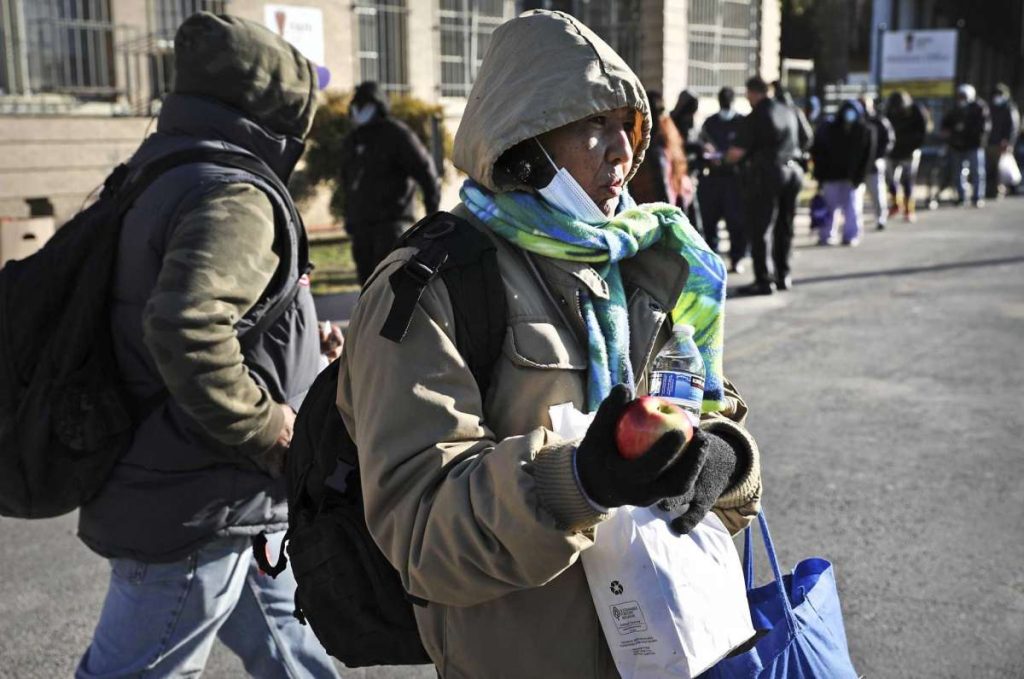 Requirements to be able to stay in the shelter (substance abuse-must be clean, time of day one must come in, behavioral requirements, can’t have a record of prostitution or other criminal offenses, must be able to care for oneself (i.e. walk to restroom or showers)
Requirements to be able to stay in the shelter (substance abuse-must be clean, time of day one must come in, behavioral requirements, can’t have a record of prostitution or other criminal offenses, must be able to care for oneself (i.e. walk to restroom or showers)- Others may not qualify for housing or even shelters because they have no paper work (ID, SS Cards, birth certificate etc.)
- Requirements to be entered into a housing database and staying current on their homeless status; so that they can get qualified when a housing option opens up
- Many can’t make the decision to get off the streets. We call it their choice but as one can see their situation makes it difficult to choose anything else. It take s along time to develop a relationship with them in order to see what their concerns are and help them overcome this barrier
- Very limited options for low barrier beds, shelters or housing. In other words because of the 4 bullet points above they actually don’t have an option for a shelter or housing
- Furthermore, even if we can move them into housing their inability to manage life and care for themselves makes it hard for them to be successful and stay
- Then ultimately there is not any housing that meets the volume of needs. Another separate issue is that if we overcome all of these obstacles with the clients, San Antonio does not have enough beds, shelters or housing that is suitable or affordable
What is going on in San Antonio specifically?
- For all populations of homeless there is not enough help for low income housing or financial help to get a housing option. There is not enough affordable housing. That is something that the City, government and nonprofits have to work on separately from the direct service work that CAM and others do with the unsheltered homeless
- The city has a housing approach with government funding for housing to prioritize those with the greatest need. At any given time there are approximately 1,000 people or households on a waiting list.
- For the Unsheltered street homeless the City and nonprofit organizations have done a coordinated effort and good job of striving to meet the physical needs of this population including food, clothing, showers, resources for ID recovery, an ongoing case management with street outreach workers. I call this managing this situation, providing grace, mercy and help to those on the streets while we try to create more resources, help the client to overcome barriers and care for those with such severe mental health issues that they may never be able to leave the streets.
- Most recently there have been a considerable amount of dollars to work on outreach workers to meet the folks on the streets and work towards case managing them and helping them to gain access to solutions to their severe homelessness due to mental health and substance abuse or both. This is incredible work and it is well coordinated but it is in its infancy. There have been a few outreach workers doing this work for about 5 or 6 years now and since COVID that number has increased tremendously. They can do this work while other nonprofits are working on the issues of making sure there is adequate food, clothing, and support to help care for the population while they are on the street and more resources for beds, and housing are made available.
GAPS in Service and Managing the Situation while caring for those in need:
- There are little to no resources for those on the street that are physically ill and really can’t care for themselves. This is a huge issue and must be addressed. It would seem that this is a Hospital indigent care issue, Adult Protective services issue etc. It is also an issue of getting them qualified for Social Security Disability and Medicaid. Once again, folks like the community street outreach workers and the health care community have to help a client with this and their lack of documentation and disability makes it very hard. These are not huge numbers but it is a very serious situation. It may get worse as some of the chronically homeless get older.
- Currently we don’t have enough low barrier places for the mentally ill, physically ill, chronic homeless, and addicted homeless to stay even if we could convince them to come off the street.
- For those that can be convinced and desire to transition, we don’t have enough housing and even then they often have some barriers that make it time consuming to get them qualified.
- Because of the lack of immediate placement, shelter, beds, and even the ability to help someone believe this is an option for them, managing where they stay, is important to the health and wellbeing of the City and the client. While we don’t want to criminalize homelessness, we also need to be aware that providing tents and allowing large tent areas to go up increases crime, the abuse of already vulnerable people, and is unhealthy for the city and the clients we serve. Prior to Covid the city did a more active clean up and asking folks to move or not allowing these to get too large or settled. It is helpful because it keeps the criminal element out who are capable of many other choices, it helps folks like CAM, Haven, and outreach workers to convince and help clients to select a better choice for living rather than the street. Ultimately we know that there are those that need care who will be on the street and things like well-coordinated supports and care done by seasoned nonprofits along with the help of the city and county can help to care for the people in these precarious situations for which we may not have a housing solution for now or ever.
Those things include:
-
- Easily accessible meals and food all day
- Showers (this is occurring)
- Clothing and items needed during inclement weather situations
- Regions with folks to provide daily help and resources other than this throughout the City. Currently CAM along with CUB, Corazon, First Pres manages a large downtown region and can continue. We may need some other strategic areas where a place like CAM can manage the areas that folks are living on the streets.
So what do we want the public to do when they see a homeless person?
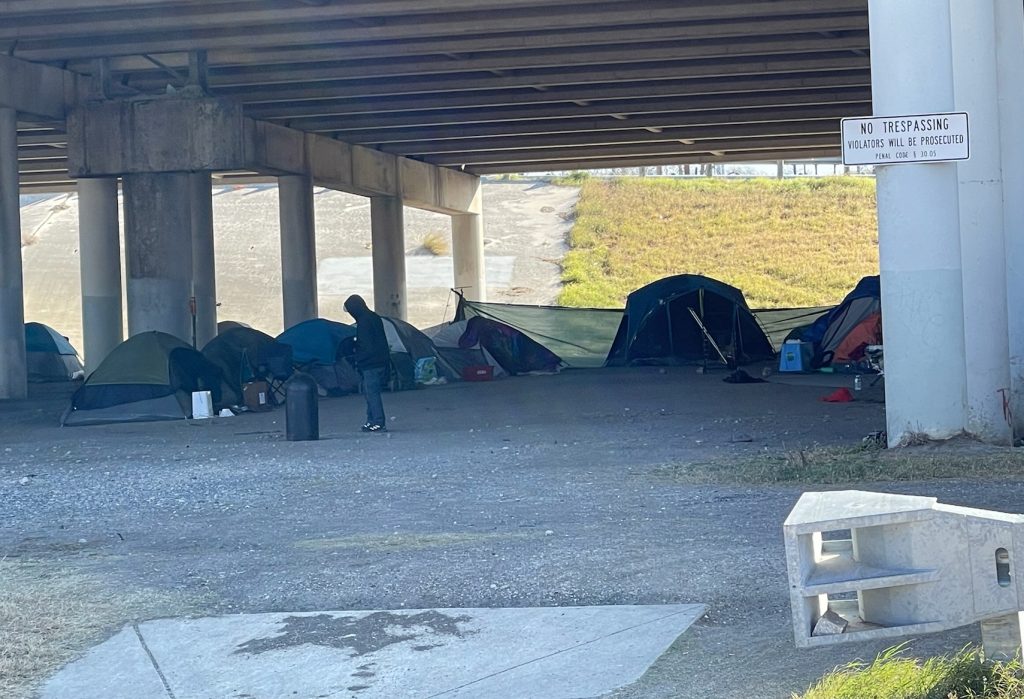 If you just randomly see someone and your heart is in it to do something at that moment, then do it-although we don’t think handing out money is the best it might be helpful that one moment. You can keep things like socks, bus tickets (day bus pass), food, water, and snacks in your car to pass out. That should be a one off things
If you just randomly see someone and your heart is in it to do something at that moment, then do it-although we don’t think handing out money is the best it might be helpful that one moment. You can keep things like socks, bus tickets (day bus pass), food, water, and snacks in your car to pass out. That should be a one off things- Give your money, your time, and your talent to those who have strategic effort. CAM makes 5,000 sack lunches a month. Join them. CUB offers a hot meal 7 nights a week, join them. Most of these places like CAM are giving out underwear and socks every day. Buy some or take on a significant amount and host a donation drive.
- If you want to do more, join another organization for a while, shadow them, volunteer and see what is needed and how you might help in a way that doesn’t hurt.
- If you think you have the ability to lobby for a big change join a public policy group, invest in law making changes related to Adult Protective Services, Housing, and Health care.
Don’t drive over to the tent city and set up a spaghetti dinner and join 5 other churches all doing the same thing. Wasting precious energy and time to provide the 5th meal of the day when you could support the organizations that are living this 365 days out of the year and help them to do the exact same thing. Also be careful about what you are handing out as far as resources, clothing, blankets, as this is also well coordinated in our community and creates waste unnecessarily.

![Close to Home Logo [grey]](https://149468646.v2.pressablecdn.com/wp-content/uploads/2023/11/Close-to-Home-Logo-grey-300x251.jpeg)

